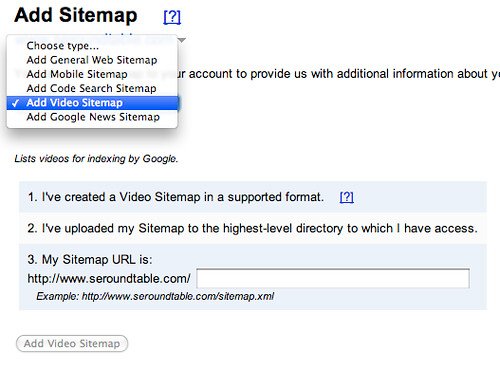Exploring the vast digital landscape, websites serve as our modern-day compasses, guiding us through the intricate realms of the online world. However, have you ever pondered over the secret behind seamless website navigation? Look no further, for we are about to embark on a journey to unravel “.” In this captivating exploration, we shall unearth the profound significance of sitemaps and delve into the intricate web of their purpose, unveiling the secrets to crafting an exceptional browsing experience for each and every visitor. Unveiling the hidden prowess of sitemaps, aspiring designers and seasoned developers alike shall converge under the banner of optimal website structure, honing their skills as the architects of the digital realm. So sit back, dear reader, and prepare to immerse yourself in a world where structure and creativity dance hand in hand. Welcome to the frontier of web design – where sitemaps reign supreme!
Table of Contents
- Mastering Sitemaps: Unveiling the Blueprint to an Optimal Website Structure
- Unlocking the Power of Sitemaps: A Guide to Streamlining Website Navigation
- Demystifying Sitemaps: Strategies for Crafting an Effective Website Hierarchy
- Enhancing User Experience: How Sitemaps Can Improve Website Navigation Efficiency
- Q&A
- The Conclusion

Mastering Sitemaps: Unveiling the Blueprint to an Optimal Website Structure
In the art of website navigation, mastering sitemaps is a fundamental step towards creating an optimal website structure that is both user-friendly and search engine-friendly. Think of sitemaps as the blueprint of your website, guiding visitors and search engine bots alike through the intricate maze of pages and content. It not only ensures that your website is easily discoverable and indexed by search engines, but also enhances user experience by providing a logical hierarchy and easy access to all the important sections of your website.
So, why should you invest time and effort into mastering sitemaps? Here are a few noteworthy benefits:
1. Streamlined user experience: A sitemap acts as a roadmap, guiding your visitors to their desired destination on your website with ease. By creating a well-structured sitemap, you can ensure that your users can effortlessly navigate through your website, boosting engagement and reducing bounce rates.
2. Enhanced search engine visibility: Search engines rely heavily on sitemaps to crawl and index your website. By providing a clear and organized sitemap, search engine bots can easily discover and index your web pages, ensuring that your website appears in relevant search results and drives organic traffic.
3. Improved website architecture: Creating a sitemap forces you to evaluate and analyze the structure of your website. It helps you identify any redundancy, broken links, or missing pages, allowing you to rectify these issues and optimize your website’s architecture for a seamless user experience.
So, whether you’re a beginner venturing into the world of website development or an experienced webmaster looking to optimize your existing website, mastering the art of sitemaps is a crucial step towards achieving an optimal website structure that benefits both your users and search engines. Remember, a well-structured sitemap is like a guiding light for your website, helping visitors find their way and search engines to understand and rank your content.
Unlocking the Power of Sitemaps: A Guide to Streamlining Website Navigation
In the vast landscape of the internet, a well-structured website navigation is the compass that directs visitors to their desired destinations. Unlocking the power of sitemaps is the key to streamlining your website’s navigation and providing a seamless user experience. Whether you’re a beginner or a seasoned web developer, mastering sitemaps is an essential skill to ensure optimal website structure.
So, what exactly is a sitemap? Think of it as a blueprint that outlines the structure and organization of your website. By creating a sitemap, you’re essentially providing search engines like Google with a roadmap to navigate and index your website efficiently. This not only helps search engines better understand your content, but it also enhances the visibility and discoverability of your web pages. With a well-designed sitemap, you’ll be able to maximize your website’s potential and attract more organic traffic.
Demystifying Sitemaps: Strategies for Crafting an Effective Website Hierarchy
In the realm of website creation, one must become a master navigator, skillfully charting the course of their website’s structure. This entails having a clear understanding of sitemaps and how they can propel your website’s hierarchy to new heights. Crafting an effective website hierarchy is an art that involves striking the perfect balance between user-friendliness and search engine optimization.
So, how can you demystify sitemaps and create a website hierarchy that captivates your audience? Here are some strategies to consider:
1. Strategize with a Tree-like Structure: Think of your website as a tree, with the homepage as the trunk and the subsequent pages as branches. Each branch represents a different category or topic, leading visitors further into the depths of your website.
2. Prioritize User Experience: When crafting your website hierarchy, always keep your audience in mind and prioritize their experience. Make sure your navigation is intuitive and easy to understand, allowing users to seamlessly navigate through your website. Incorporate dropdown menus or a navigation bar to guide visitors towards relevant sections of your site.
3. Optimize for Search Engines: While user experience is essential, don’t neglect the importance of search engine optimization (SEO). Include relevant keywords in your page URLs and headings, and ensure that your website is crawlable by search engine bots. By optimizing your website for search engines, you increase your chances of ranking higher in search results, thus attracting more organic traffic.
4. Dive into the World of Internal Linking: Internal linking is a powerful tool that connects different pages within your website. By strategically placing links within your content, you can guide visitors to related articles or pages of interest. This not only enhances user experience but also helps search engines understand the structure and hierarchy of your website.
5. Don’t Forget Mobile Responsiveness: In today’s mobile-dominated world, it’s crucial to ensure your website is optimized for mobile devices. Create a responsive design that adapts seamlessly to different screen sizes and resolutions. This will improve user experience and boost your website’s visibility on mobile search results.
Mastering the art of sitemaps and crafting an effective website hierarchy may seem daunting at first, but with these strategies in your navigational toolkit, you’ll be well on your way to creating a captivating website structure that engages your visitors and pleases search engines alike. So set sail, navigate with confidence, and watch as your website reaches new horizons!
Enhancing User Experience: How Sitemaps Can Improve Website Navigation Efficiency
Sitemaps, often overlooked in website design, hold the key to unlocking a smooth and efficient user experience. Picture this: you arrive at a bustling city for the first time, armed with a detailed map highlighting all the important landmarks and streets. Navigating through its crowded alleys becomes a breeze, right? Well, the same concept applies to website navigation. Sitemaps serve as a visual representation of your website’s structure, allowing users to effortlessly explore all its nooks and crannies.
One of the most appealing aspects of using sitemaps is their ability to provide a comprehensive overview of your website’s hierarchical structure. Like a well-organized filing cabinet, sitemaps categorize each page into folders, making it easier for users to find what they’re looking for. This hierarchical structure is particularly helpful for bigger websites with numerous sections and sub-sections. By making the content easily accessible and logically organized, sitemaps enhance user experience and decrease bounce rates. Additionally, sitemaps are a powerful tool for search engine optimization (SEO) as they help search engine bots crawl through your website more effectively, resulting in better visibility in search results. So, whether you’re a beginner or an experienced web developer, investing time in mastering the art of sitemaps can greatly benefit your website’s navigation efficiency.
Q&A
Q: What is the role of a sitemap in website structure?
A: Just like a map helps you navigate through unfamiliar territory, a sitemap acts as a blueprint for your website’s structure. It ensures that all your webpages are organized and interconnected, paving the way for seamless navigation.
Q: How does a well-structured sitemap benefit website owners?
A: A well-structured sitemap enhances user experience by making it easier for visitors to explore your website. Moreover, search engines love it too, as it helps them crawl and index your pages more efficiently, boosting your website’s visibility in search engine rankings.
Q: Can you shed some light on the different types of sitemaps?
A: Of course! There are primarily two types of sitemaps: HTML sitemaps and XML sitemaps. HTML sitemaps are designed for human consumption, displaying an organized list of links to help visitors navigate your website. On the other hand, XML sitemaps are specifically created for search engine crawlers, providing them with a structured overview of your site’s pages.
Q: How does one create an effective sitemap?
A: Creating a sitemap requires a clear understanding of your website’s structure and goals. Start by identifying your most important pages and organizing them into logical categories. Mapping out the hierarchical relationships between pages is crucial. You can then create an HTML sitemap using HTML markup or generate an XML sitemap using various online tools.
Q: Are there any best practices to follow when structuring a sitemap?
A: Absolutely! Firstly, keep your sitemap organized and easy to comprehend. Avoid cluttering it with unnecessary pages or confusing navigation paths. Secondly, ensure that your sitemap is up to date and includes all your important pages. Lastly, regularly review and update your sitemap as your website evolves, ensuring it remains an accurate reflection of your site’s structure.
Q: Can a sitemap solve all navigational problems on a website?
A: While a well-structured sitemap is a vital component of a user-friendly website, it’s not a magical solution to all navigational issues. A sitemap should be complemented with intuitive menus, search functionality, and clear layout design to provide a holistic navigation experience.
Q: Should a sitemap be visible to website visitors?
A: While an XML sitemap is meant solely for search engines and not intended for visitors, an HTML sitemap can certainly be made visible. Adding a link to your HTML sitemap in the footer or sidebar of your website allows visitors to easily access it and find relevant pages quickly.
Q: Are there any common mistakes to avoid regarding sitemaps?
A: One common mistake is including duplicate content in your sitemap. Each page in your sitemap should have a unique URL and content to avoid confusion for both users and search engines. Additionally, neglecting to update your sitemap regularly is a pitfall that should be avoided, as it can misguide users and harm your SEO efforts.
Q: Can an optimized sitemap improve a website’s SEO?
A: Yes, indeed! A strategically structured and regularly updated sitemap can significantly enhance your website’s search engine optimization. It allows search engines to discover and index your pages more effectively, leading to improved visibility in search results and potentially higher organic traffic.
Q: Is it worth investing time in learning about sitemaps for website owners?
A: Absolutely! Understanding the art of navigating through sitemaps and mastering their implementation is crucial for website owners who want to deliver a seamless user experience and achieve better search engine rankings. It’s a small investment of time that yields significant long-term benefits for any website.
Closing Remarks
In the vast ocean of the digital world, where websites rise and fall like waves, mastering the art of navigation becomes paramount. With sitemaps as our compass, we have embarked on a journey to unravel the secrets of optimal website structure. As we conclude our exploration through this labyrinth of hyperlinks and pathways, we hope you have gained invaluable insights and tools to navigate your virtual vessels with confidence.
Through the careful deployment of sitemaps, we have witnessed the transformation of chaotic web domains into organized sanctuaries of information. By understanding the underlying principles behind sitemap construction, you are now equipped to lead your online domain towards newfound success. Remember, a well-planned and intuitive sitemap is the gateway to a seamless user experience, allowing visitors to effortlessly navigate your digital realm and discover the riches it holds.
Just like a skilled cartographer meticulously crafts their maps, you too must channel your creativity and attention to detail while designing your sitemap. The fusion of art and science, the marriage of aesthetics and functionality – these are the elements that will lay the foundation for a memorable user journey. So, let your imagination run wild and paint a masterpiece of links, pages, and pathways, forging a direct path to your users’ hearts.
But let us not forget the importance of adaptability in this ever-evolving digital landscape. As technology advances and user expectations shift, so too must our sitemaps. Embrace the art of refining and updating your structures, embracing new trends and insights to ensure your website remains at the forefront of innovation.
As we bid adieu to our dive into the art of navigating with sitemaps, remember that practice makes perfect. Experiment, learn from your users, and continuously improve the user experience. The mastery of sitemaps is an ongoing journey, as vast and dynamic as the internet itself.
So, fellow navigators, venture forth with confidence and a newfound appreciation for the art of sitemaps. With every click, every scroll, and every interaction, may your websites inspire, inform, and delight. Here’s to creating virtual landscapes that leave an indelible mark on the canvas of the World Wide Web. Bon voyage!

